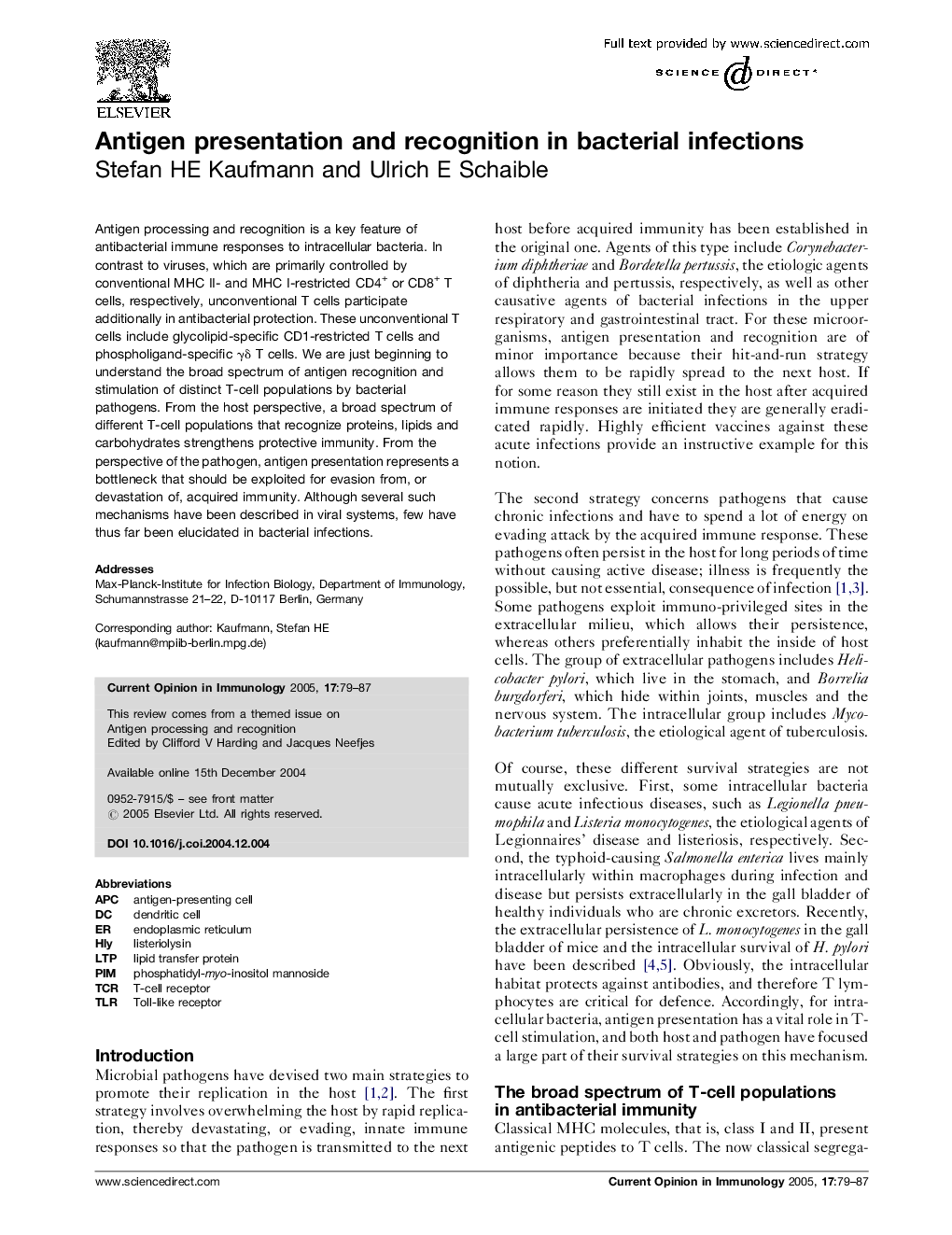| Article ID | Journal | Published Year | Pages | File Type |
|---|---|---|---|---|
| 9262898 | Current Opinion in Immunology | 2005 | 9 Pages |
Abstract
Antigen processing and recognition is a key feature of antibacterial immune responses to intracellular bacteria. In contrast to viruses, which are primarily controlled by conventional MHC II- and MHC I-restricted CD4+ or CD8+ T cells, respectively, unconventional T cells participate additionally in antibacterial protection. These unconventional T cells include glycolipid-specific CD1-restricted T cells and phospholigand-specific γδ T cells. We are just beginning to understand the broad spectrum of antigen recognition and stimulation of distinct T-cell populations by bacterial pathogens. From the host perspective, a broad spectrum of different T-cell populations that recognize proteins, lipids and carbohydrates strengthens protective immunity. From the perspective of the pathogen, antigen presentation represents a bottleneck that should be exploited for evasion from, or devastation of, acquired immunity. Although several such mechanisms have been described in viral systems, few have thus far been elucidated in bacterial infections.
Keywords
Related Topics
Life Sciences
Immunology and Microbiology
Immunology
Authors
Stefan HE Kaufmann, Ulrich E Schaible,
